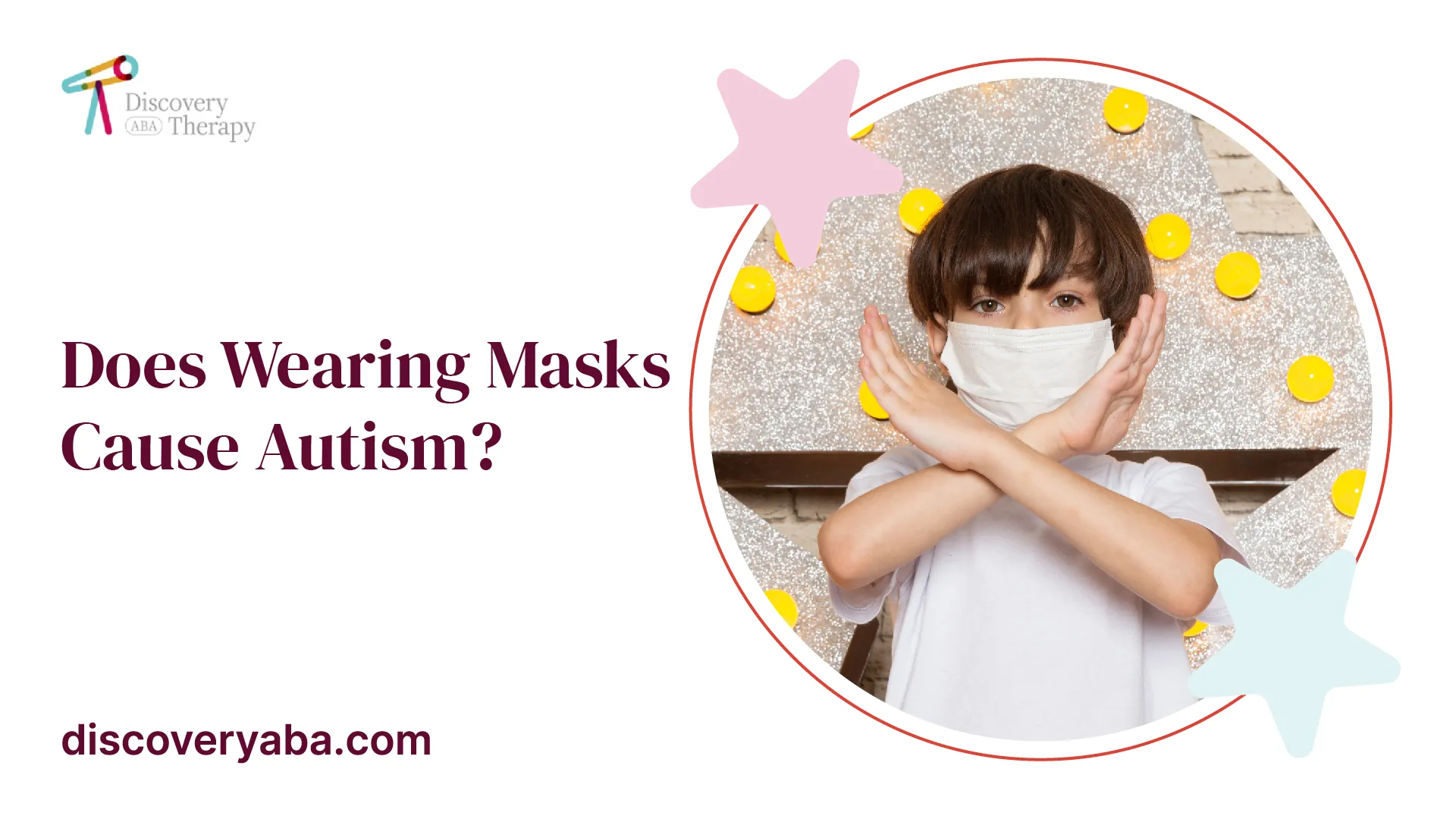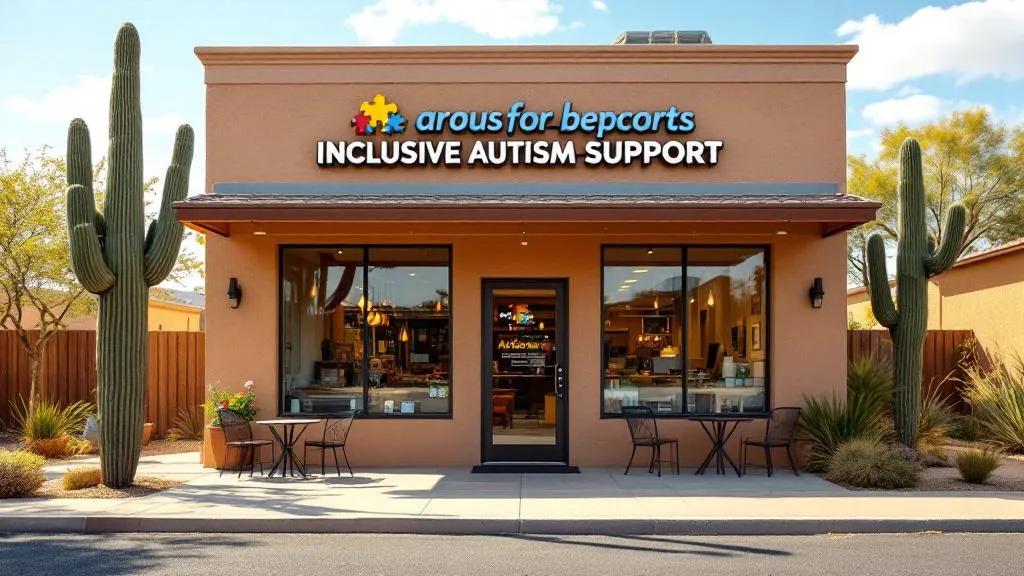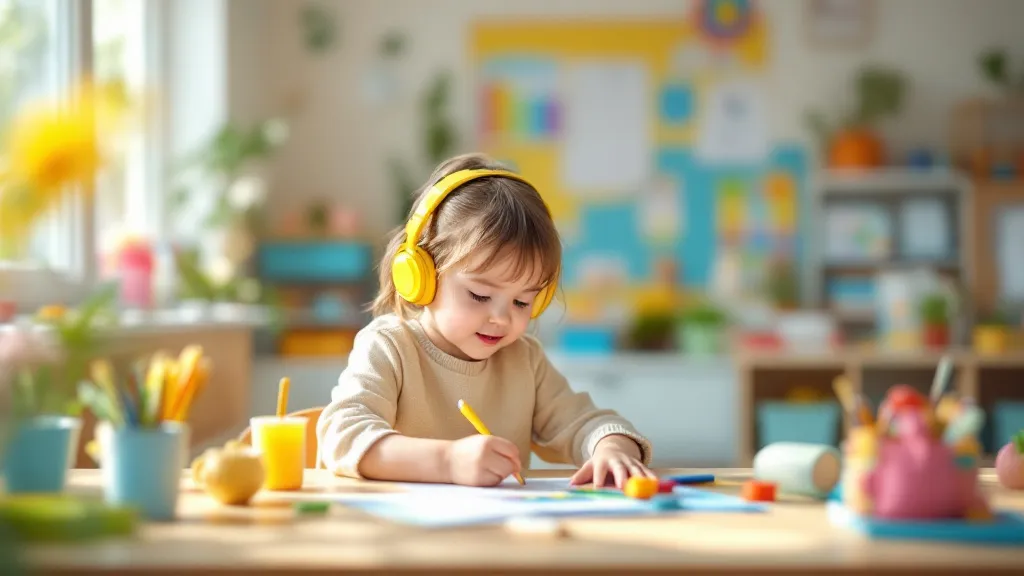Does Wearing Masks Cause Autism?
In recent times, there have been concerns and misconceptions regarding the correlation between wearing masks and autism.
.jpeg)
Understanding Autism
To gain a better understanding of the topic at hand, it is important to explore what autism is and the common characteristics associated with it.

What is Autism?
Autism, also known as Autism Spectrum Disorder (ASD), is a neurodevelopmental disorder that affects the way a person perceives and interacts with the world around them. It is characterized by challenges in social communication, repetitive behaviors, and restricted interests.
Individuals with autism may experience differences in how they communicate, learn, and process sensory information. It is important to note that autism is a spectrum disorder, meaning that it can vary greatly from person to person. Some individuals may require more support in certain areas, while others may have exceptional abilities in specific domains.
Common Characteristics of Autism
While autism manifests differently in each individual, there are some common characteristics that are often associated with the disorder. These can include:
- Social Communication Challenges: Difficulties in understanding and using verbal and nonverbal communication cues, such as facial expressions, body language, and tone of voice.
- Repetitive Behaviors: Engaging in repetitive movements or behaviors, such as hand flapping, rocking, or specific routines, which can provide a sense of comfort and predictability.
- Sensory Sensitivities: Heightened or diminished sensitivity to sensory stimuli, such as light, sound, touch, taste, or smell. This can result in either seeking or avoiding certain sensory experiences.
- Rigid Thinking: A tendency to think in a rigid or inflexible manner, often struggling with changes in routines or transitioning between activities.
- Special Interests: Developing intense interests in specific topics or subjects, often focusing on a particular area and accumulating extensive knowledge in that domain.
It is important to approach discussions surrounding autism and its potential relationships with external factors, such as wearing masks, with scientific evidence and research.

The Importance of Masks
In the midst of the COVID-19 pandemic, wearing masks has become an essential part of our daily lives. It is important to understand why wearing masks is important and the benefits of mask-wearing for everyone, including individuals with autism.
Why Wearing Masks is Important?
Wearing masks serves as a critical measure to help prevent the spread of the virus. Masks act as a barrier, reducing the transmission of respiratory droplets that may contain the virus. This is particularly crucial in situations where maintaining physical distance is challenging, such as in crowded spaces or public transportation.
For individuals with autism, who may have sensory sensitivities or difficulty understanding social cues, it is essential to provide clear and consistent guidance on the importance of mask-wearing. By explaining the purpose of masks in simple and concrete terms, individuals with autism can better understand the need to wear masks to protect themselves and others.
Benefits of Mask-Wearing for Everyone
Mask-wearing offers several benefits that extend beyond preventing the spread of COVID-19. Here are some reasons why mask-wearing is beneficial for everyone:
- Reduced transmission of respiratory illnesses: Wearing masks not only helps prevent the spread of COVID-19 but also reduces the transmission of other respiratory illnesses like the flu or common cold.
- Protection for vulnerable populations: By wearing masks, we protect individuals who are more susceptible to severe illness, such as the elderly or those with underlying health conditions—including individuals with autism.
- Community responsibility: Wearing masks demonstrates a sense of community responsibility and solidarity. It shows that we care about the well-being of those around us and are committed to keeping each other safe.
- Normalization and social inclusion: When everyone wears masks, it normalizes the act of mask-wearing and promotes social inclusion. Individuals with autism may feel more comfortable and accepted when mask-wearing is a common practice among their peers.
By understanding the importance and benefits of mask-wearing, we can collectively contribute to safeguarding the health and well-being of our communities.
Next, let's address the misconception surrounding the correlation between mask-wearing and autism.
Debunking the Myth
In recent times, there have been concerns and misconceptions regarding the correlation between wearing masks and autism. However, it is important to address these concerns and rely on scientific evidence and research findings to debunk this myth.
Does Wearing Masks Cause Autism?
To put it simply, wearing masks does not cause autism. Autism is a neurodevelopmental disorder that is present from early childhood, characterized by challenges in social interaction, communication, and repetitive behaviors. It is not caused by external factors such as wearing masks.
The notion that masks cause autism is a misconception that stems from a misunderstanding of the correlation between mask-wearing and autism. While it is true that individuals with autism may face challenges with mask-wearing due to sensory sensitivities or difficulties with social cues, this does not indicate a causal relationship between masks and autism.
Scientific Evidence and Research Findings
Extensive research has been conducted to explore the correlation between autism and mask-wearing. The overwhelming scientific consensus is that there is no evidence to support the claim that wearing masks causes autism.
Studies have focused on understanding the impact of masks on individuals with autism and how it may affect their communication and sensory experiences. These studies provide valuable insights into the specific challenges faced by individuals with autism when wearing masks, but they do not establish a causal relationship between masks and the development of autism.
It is important to recognize that autism is a complex neurodevelopmental condition that is believed to have a combination of genetic and environmental factors contributing to its manifestation. Wearing masks, which have become a common practice for public health reasons, does not play a role in the development of autism.
By understanding the scientific evidence and dispelling the myth surrounding masks and autism, we can create a more inclusive and informed society that supports individuals with autism. It is crucial to rely on accurate information and promote acceptance and understanding for everyone.
Communication Challenges
For individuals with autism, effective communication is crucial for social interaction and understanding the world around them. However, the use of face masks can present unique challenges in communication. In this section, we will explore the impact of masks on communication for individuals with autism and discuss strategies for effective communication.
Impact of Masks on Communication for Individuals with Autism
Masks can pose difficulties for individuals with autism who rely on visual cues, facial expressions, and lip reading to understand and interpret communication. The inability to see a person's full face can hinder their ability to recognize emotions, understand social cues, and comprehend spoken language. This can lead to feelings of confusion, frustration, and anxiety.
Understanding the impact of masks on communication is essential for creating inclusive environments that support individuals with autism. By recognizing these challenges, we can work towards finding effective solutions to ensure that communication remains accessible and meaningful for everyone.
Strategies for Effective Communication
To facilitate effective communication for individuals with autism, various strategies can be employed, especially when face masks are worn. Here are some helpful techniques:
- Visual supports: Utilize visual supports such as picture schedules, social stories, or visual cues to supplement verbal communication. These tools can help individuals with autism better understand instructions, expectations, or social situations.
- Clear and simple language: Use clear and simple language when communicating. Speak slowly, use shorter sentences, and repeat or rephrase information if necessary. This can enhance comprehension and reduce confusion.
- Non-verbal communication: Encourage the use of non-verbal communication methods such as gestures, pointing, or using visual aids. These can serve as alternative means of expressing needs or understanding information when facial expressions or lip reading are hindered.
- Virtual communication: In situations where face-to-face communication is challenging, consider utilizing virtual platforms that allow for clear visibility of facial expressions and gestures. Video calls or teleconferencing can be effective alternatives to in-person interactions.
- Use of clear masks: In situations where masks are necessary, consider using clear masks that allow for improved visibility of facial expressions and lip movements. Clear masks can help bridge the communication gap and enhance understanding for individuals with autism.
By implementing these strategies, individuals with autism can navigate the communication challenges posed by masks more effectively. It is important to create understanding and awareness within communities to ensure inclusive environments that support the unique needs of individuals with autism.
Understanding the impact of masks on communication for individuals with autism is crucial, and by employing these strategies, we can foster effective and meaningful interactions.
Supporting Individuals with Autism
When it comes to supporting individuals with autism, it is essential to create autism-inclusive environments and provide alternative communication methods. These strategies can help individuals with autism navigate social situations, including those involving mask-wearing.
Creating Autism-Inclusive Environments
Creating autism-inclusive environments involves fostering understanding, acceptance, and support for individuals with autism. By implementing the following strategies, we can create a more inclusive and accommodating environment:
- Education and Awareness: Educate people about autism to enhance understanding and reduce misconceptions. Promote awareness campaigns to encourage acceptance and empathy towards individuals with autism.
- Sensory Considerations: Be mindful of sensory sensitivities that individuals with autism may experience. Provide quiet spaces, minimize sensory distractions, and consider using visual supports such as visual schedules or social stories.
- Structured Routines: Establish structured routines and clear expectations to help individuals with autism feel more comfortable and secure. Predictability can alleviate anxiety and enable individuals to navigate their environment more effectively.
- Individualized Approaches: Recognize that each individual with autism is unique and may require different accommodations. Tailor support to meet their specific needs, preferences, and communication styles.
By implementing these autism-inclusive practices, we can create an environment that supports and respects individuals with autism.
Alternative Communication Methods
Communication can be challenging for individuals with autism, especially when face masks are involved. To overcome these challenges, alternative communication methods can be used:
- Visual Supports: Visual supports such as visual schedules, picture cards, or communication boards can aid individuals with autism in understanding and expressing themselves. These visual cues can help bridge communication gaps caused by mask-wearing.
- Augmentative and Alternative Communication (AAC) Devices: AAC devices, including speech-generating devices, picture-based communication apps, or sign language, can provide alternative means of communication for individuals with autism. These tools enable individuals to communicate effectively, even when face masks may hinder verbal communication.
- Clear Face Masks: Clear face masks have transparent panels that allow for better visibility of facial expressions and lip movements. These masks can be beneficial for individuals who rely on visual cues to understand verbal communication.
- Social Stories: Social stories are personalized narratives that describe social situations and appropriate responses. Using social stories can help individuals with autism understand the importance of mask-wearing and adapt to wearing masks themselves.
By employing these alternative communication methods, we can facilitate effective communication and support individuals with autism in various social settings.
Remember, it is crucial to recognize and respect the individual needs of each person with autism. By creating autism-inclusive environments and providing alternative communication methods, we can ensure that individuals with autism feel supported and included in mask-wearing situations.
Conclusion
In conclusion, it is crucial to dispel the misconception that wearing masks causes autism. There is no scientific evidence or research that supports such a claim. Autism is a neurodevelopmental condition that is present from early childhood and is characterized by challenges in social interaction, communication, and repetitive behaviors.
While individuals with autism may face unique communication challenges when masks are worn, it is important to recognize the importance of mask-wearing for public health and safety. Wearing masks helps to reduce the spread of infectious diseases, including COVID-19. It is a necessary measure to protect both individuals with autism and the general population.
To support individuals with autism during mask-wearing situations, it is essential to create autism-inclusive environments. This involves providing clear communication strategies, such as using visual aids or utilizing alternative communication methods when necessary. By understanding and accommodating the specific needs of individuals with autism, we can ensure their inclusion and well-being.
Let us work together to raise awareness, promote understanding, and create a supportive environment for individuals with autism. By embracing empathy and knowledge, we can empower autism awareness and foster inclusivity in our communities.
Sources
Does Your Child Have An Autism Diagnosis?
Learn More About How ABA Therapy Can Help
Find More Articles
Contact us
North Carolina, Tennessee, Nevada, New Jersey, Utah, Virginia
New Hampshire, Maine
Massachusetts, Indiana, Arizona, Georgia
.avif)


































































































